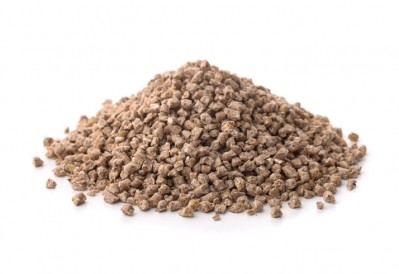Feed processing innovation
Unlocking the benefits of Azomite: Boosting pellet production for broiler feed

The key to this improvement lies in AZM's properties that include scouring and lubrication effects, according to animal and nutritional science researchers based at West Virginia University, in the US.
Their paper was published in the Journal of Applied Poultry Research.
Feed ingredient and manufacturing costs are a major part of poultry production expenses, accounting for 60 to 70% of the total input costs. Consequently, improving feed manufacturing efficiency can have a substantial impact on economic profit.
Challenges in pellet production
Pelletized feed is crucial in broiler diets as it enhances feed flow, reduces nutrient segregation, and boosts overall performance.
Pellet production rate (PPR) and pellet durability index (PDI) are key factors in feed quality and efficiency. These metrics can be influenced by various elements such as mixer-added fat, conditioning time and temperature, particle size, die specifications, and diet formulation, say the research team.
Given the rising costs of traditional feed ingredients, alternatives like DDGS have become more attractive. However, DDGS can negatively impact PPR and PDI due to its oil content, which adds lubrication in the pellet die, reducing pellet quality,
Inorganic phosphate sources have traditionally been used to improve PPR due to their abrasive properties. However, their use has declined due to increased costs, reduced availability, and environmental concerns. This shift has driven the search for alternative solutions, with AZM emerging as a viable option, say the authors.
The role of Azomite
Azomite, a product derived from solidified volcanic ash, contains a mix of non-crystalline composites, and acts through two primary mechanisms: the coarse fraction's irregular shape scours the pellet die, clearing residue, while the fine fraction interacts with heat and water to lubricate the pellet die interior, explain the team.
Studies have shown that including AZM at a 0.25% rate in diets can increase PPR by 7.9% and slightly reduce PDI by 1.6 percentage points, they add.
Study highlights
Their study investigated the effects of AZM (0.25% inclusion) on PPR, PDI, and hot pellet temperature (HPT) using three pellet die thicknesses (PDT: 32 mm, 38 mm, and 45 mm).
The feed manufacturing process utilized a California Pellet Mill conditioner and pellet mill, with experimental batches weighing 653 kg.
Key findings include:
AZM inclusion increased PPR by 7.9% and it slightly decreased PDI by 1.6 percentage points.
Increasing PDT from 32 mm to 38 mm/45 mm reduced PPR by 28.5% and improved PDI by 10.1 percentage points.
AZM lowered HPT for the 32 mm and 38 mm PDTs, but no significant difference was noted for the 45 mm PDT, according to the researchers.
Conclusion
The authors see that AZM increased pellet production rates across different pellet die thicknesses. The additive slightly decreased the pellet durability index, but the team say the reduction is minimal and unlikely to impact broiler performance.
The study was supported by Azomite Mineral Products.
Source: Journal of Applied Poultry Research
Title: Azomite, a dacitic (rhyolitic) tuff breccia, included at 0.25% in feed manufactured with 32, 38, and 45 mm pellet die thicknesses increased pellet production rate by 5.0, 7.9, and 11.8%, respectively
Authors: LE Knarr, KM Bowen, J Ferrel, JS Moritz










